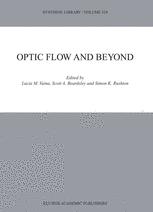

Most ebook files are in PDF format, so you can easily read them using various software such as Foxit Reader or directly on the Google Chrome browser.
Some ebook files are released by publishers in other formats such as .awz, .mobi, .epub, .fb2, etc. You may need to install specific software to read these formats on mobile/PC, such as Calibre.
Please read the tutorial at this link: https://ebookbell.com/faq
We offer FREE conversion to the popular formats you request; however, this may take some time. Therefore, right after payment, please email us, and we will try to provide the service as quickly as possible.
For some exceptional file formats or broken links (if any), please refrain from opening any disputes. Instead, email us first, and we will try to assist within a maximum of 6 hours.
EbookBell Team

4.8
54 reviewsOptic flow provides all the information necessary to guide a walking human or a mobile robot to its target. Over the past 50 years, a body of research on optic flow spanning the disciplines of neurophysiology, psychophysics, experimental psychology, brain imaging and computational modelling has accumulated. Today, when we survey the field, we find independent lines of research have now converged and many arguments have been resolved; simultaneously the underpinning assumptions of flow theory are being questioned and alternative accounts of the visual guidance of locomotion proposed. At this critical juncture, this volume offers a timely review of what has been learnt and pointers to where the field is going.